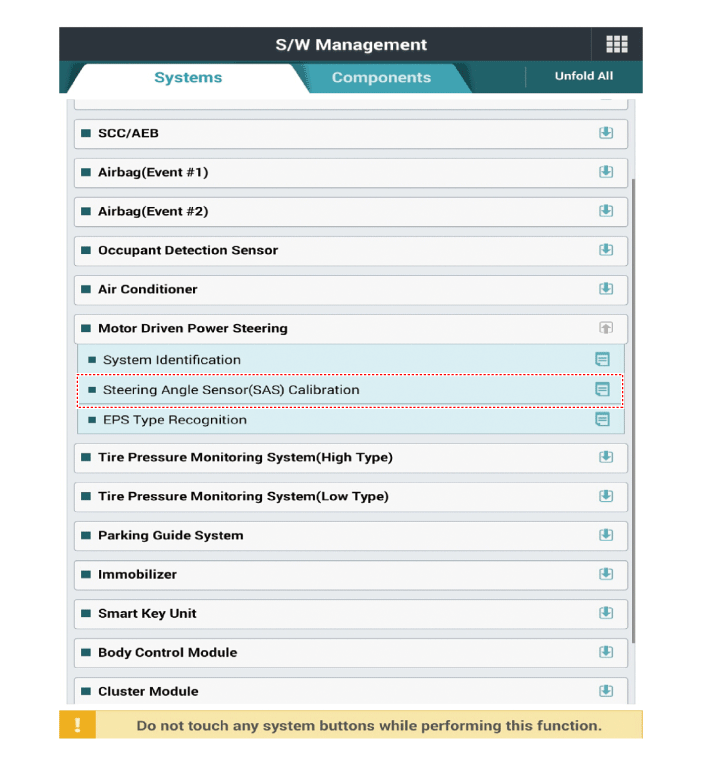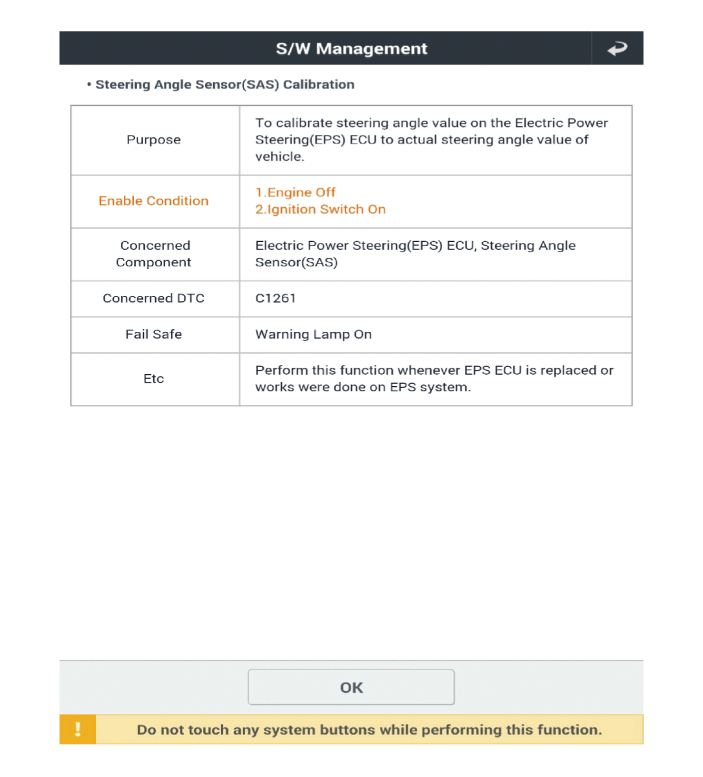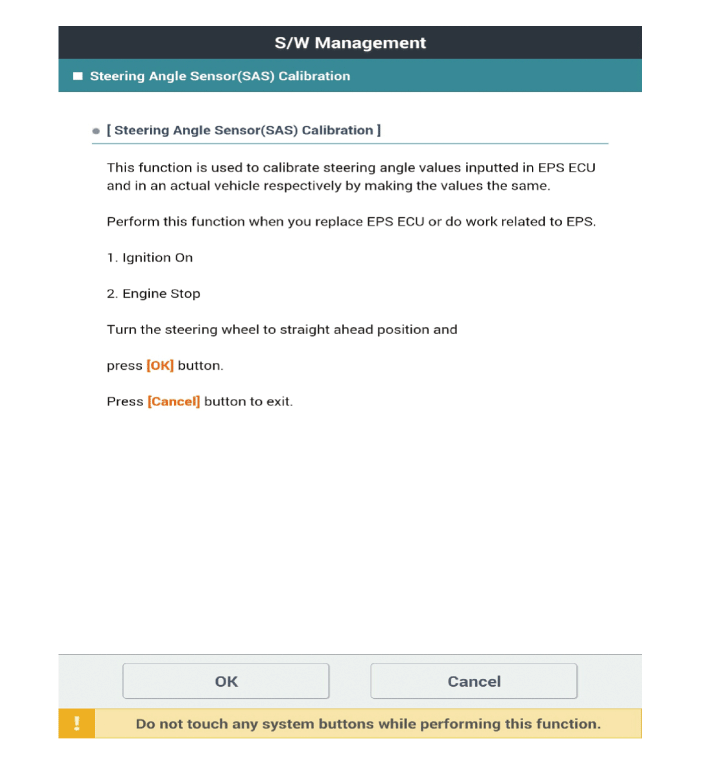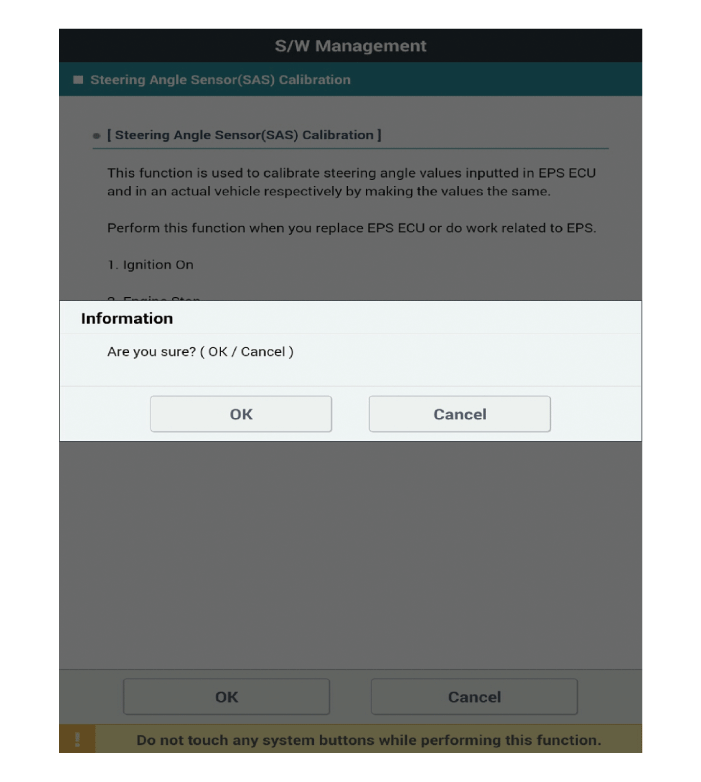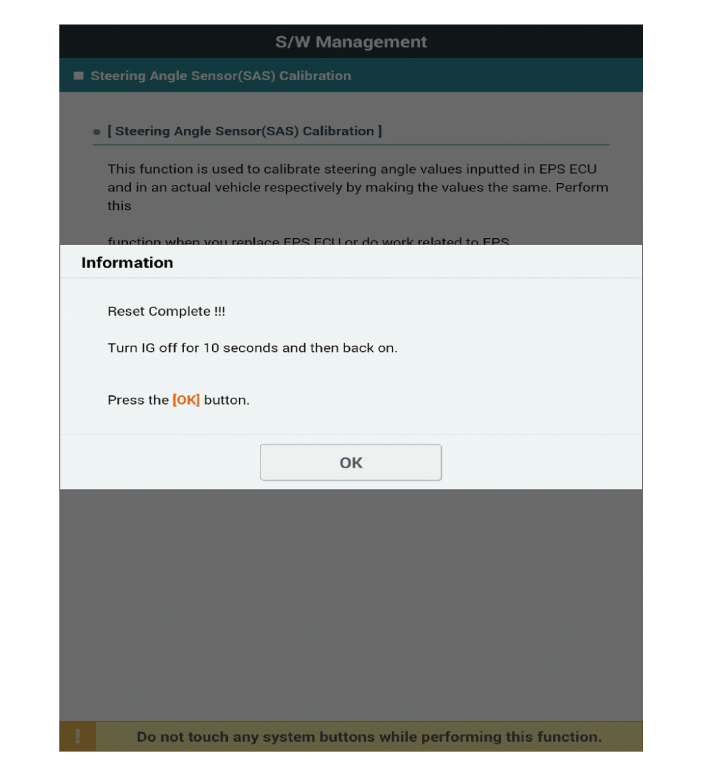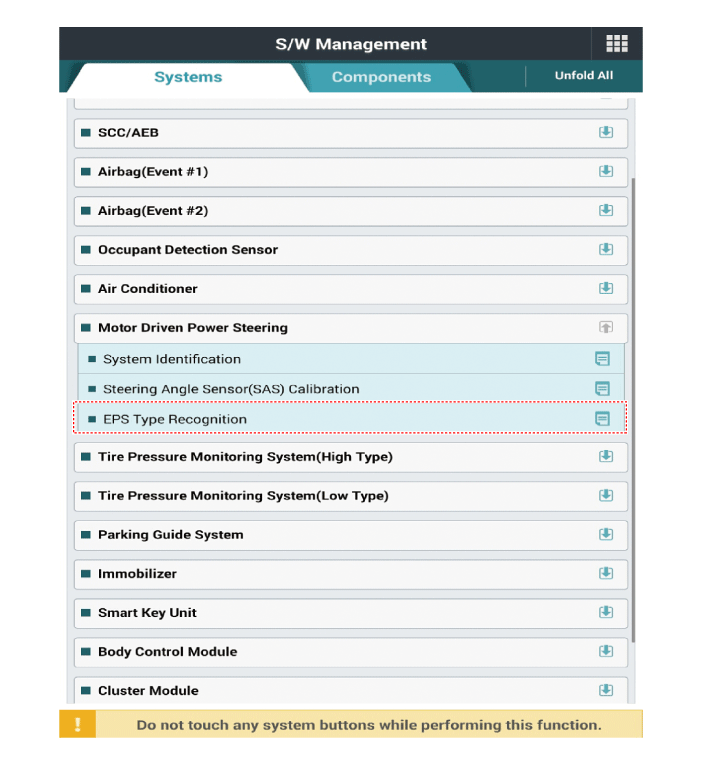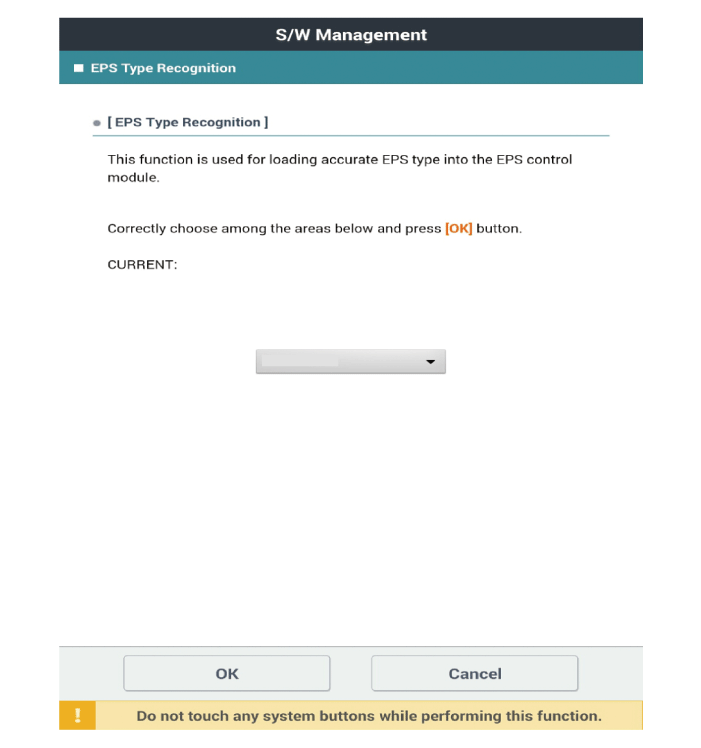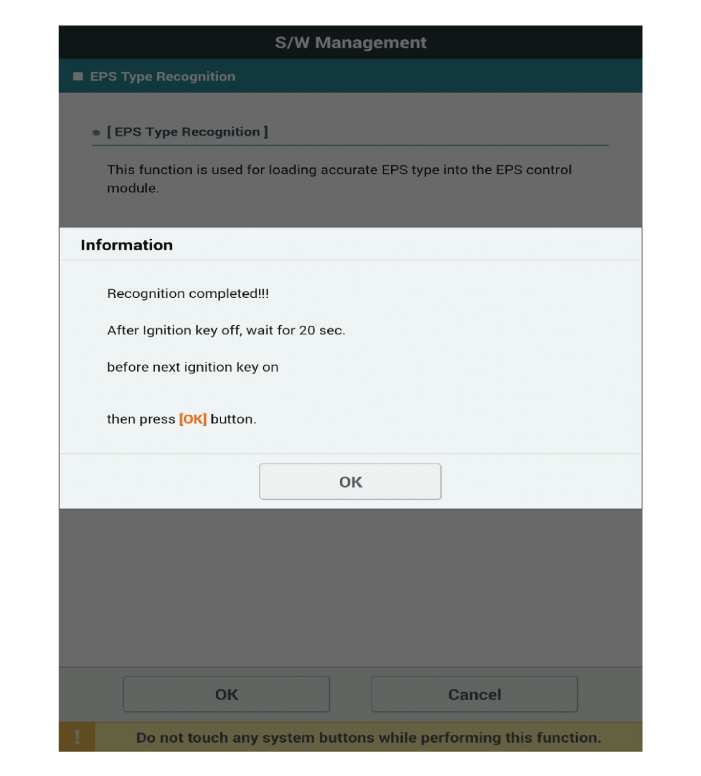Kia Stinger: Steering System / Electric Power Steering
Description and operation
| Description |
EPS (Electric power steering, Column assist type) system is an engine operation independent steering system that uses an electric motor to assist the steering force.
EPS control module controls the motor operation based on input signals from torque sensor and steering angle sensor via CAN (Controller Area Network), resulting in a more precise and timely control of steering assist thatn conventional engine-driven hydraulic systems.
Components (Steering Angle Sensor, Torque Sensor, Fail-safe relay, etc.) of the EPS system are located inside the steering column. EPS unit assembly, steering column, and EPS unit assembly must not be disassembled for inspection. They must be replaced if necessary.
Note With Regard to Diagnosis
|
Trouble factor |
Check item |
Trouble symtom |
Explanation |
Note |
|
Drop, impact, and overload |
Motor |
Abnormal noise |
- Visible or invisible damage may occur. The steering wheel may pull to
one side when dropped parts are used. Precise parts of motor / ECU are sensitive
to vibration and impact. Overload may cause unexpected damage. |
- Do not use the impacted EPS. - Do not overload each part. |
|
ECU |
- Circuit damage - Wrong welding point - Broken PCB - Damaged precise parts |
|||
|
Torque sensor |
Insufficient steering effort |
Overload to INPUT shaft can cause malfunction of the torque sensor |
- Do not impact the connecting parts (when inserting and torquing). - Use the specified tool to remove the steering wheel. (Do not hammer on it.) - Do not use the impacted EPS. |
|
|
Shaft |
Insufficient steering effort (Uneven between LH and RH) |
|
Do not use impacted EPS |
|
|
Pull/Dent |
Harness |
- Malfunctioning - Power operation impossible - Malfunction of EPS |
Disconnection between harness connecting portion and harness |
Do not overload the harness |
|
Abnormal storage temperature |
Motor/ECU |
Abnormal steering effort by improper operation of the motor/ECU |
- Waterproof at normal condition - Even a slight moisture can cause malfunction in precise parts of the motor / ECU |
- Maintain normal storage temperature and humidity. - Avoid submerging in water. |
| 1. |
Do not impact the electronic parts. If they are dropped or impacted, replace them with new ones. |
| 2. |
Avoid heat and moisture to the electronic parts. |
| 3. |
Do not contact the connect terminal to avoid deformation and static electricity. |
| 4. |
Do not impact the motor and torque sensor parts. If they are dropped or impacted, replace them with new ones. |
| 5. |
The connector should be disconnected or connected with ignition OFF. |
Components and components location
| Components |
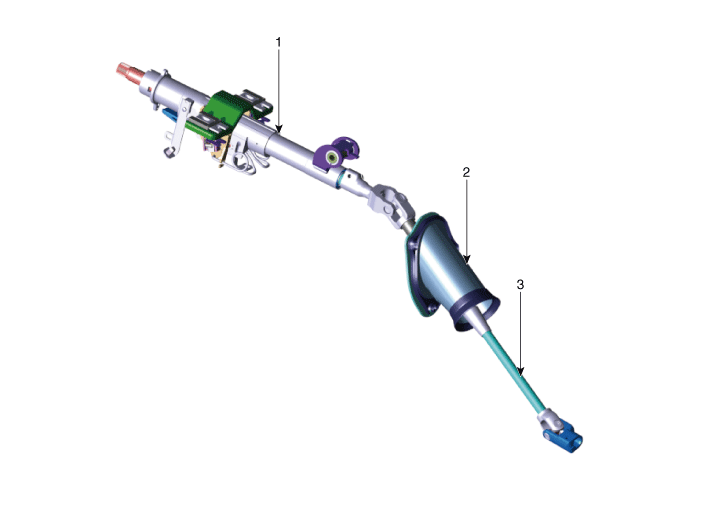
| 1. Steering column 2. Dust cover |
3. Universal joint |
Schematic diagrams
| Schematic Diagrams |
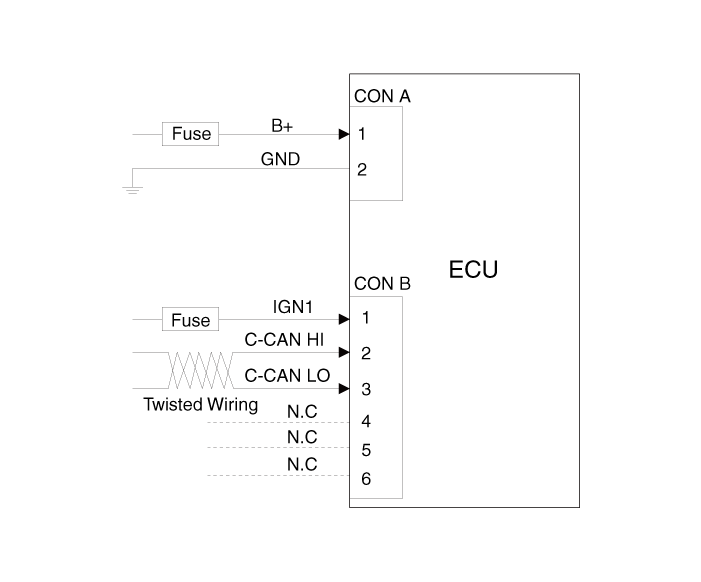
| Harness Connector |
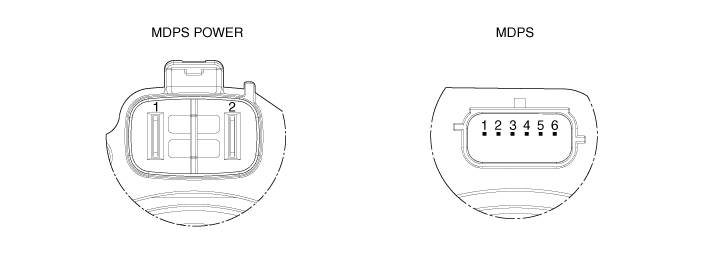
|
Item |
Pin |
Pin name |
|
MDPS Power |
1 |
Battery + |
|
2 |
Battery - |
|
|
MDPS Unit |
1 |
Ignition |
|
7 |
CAN High |
|
|
8 |
CAN Low |
Repair procedures
| General Inspection |
Before and after servicing the EPS system, perform the troubleshooting and test procedure as follows. Compare the system condition with normal condition in the table below and if abnormal symptom is detected, perform necessary remedy and inspection.
|
Test condition |
Normal condition: Motor must not supply steering assist. |
||
|
Symptom |
Possible cause |
Remedy |
|
|
IG Off |
Motor supplies steering assist. |
ASP is not calibrated. |
Perform the ASP calibration using a scan tool. |
|
IG power supplies |
Inspect the IG power supply line. |
||
|
Test condition |
Normal condition: Motor must not supply steering assist, Warning lamp is
illuminated. |
||
|
Symptom |
Possible cause |
Remedy |
|
|
IG On/Engine Off |
Motor supplies steering assist. |
ASP is not calibrated. |
Perform the ASP calibration using a scan tool. |
|
EMS CAN signal is not received. |
Inspect the CAN line. |
||
|
Warning lamp is not illuminated. |
Cluster fault |
Inspect the cluster and cluster harness. |
|
|
Test condition |
Normal condition: Motor supplies steering assist, Warning lamp is not illuminated.
|
||
|
Symptom |
Possible cause |
Remedy |
|
|
IG On/Engine On |
Warning lamp is illuminated and motor does not supply steering assist.
|
EPS (Hot at all times) and IG power supply fault |
Inspect the connector and harness for EPS (Hot at all times) and IG power
supply line. |
|
DTC is detected by system. |
Perform the self test using a scan tool and repair or replace. |
||
|
Warning lamp is illuminated and motor supplies steering assist. |
ASP is not calibrated. |
Perform the ASP calibration using a scan tool. |
|
|
CAN communication between EPS and cluster is fault. |
Inspect the CAN line. |
||
ASP: Absolute Steering Position
CAN: Controller Area Network
EMS: Engine Management System
The following symptoms may occur during normal vehicle operation and if there is no EPS warning light illumination, the EPS system is not malfunctioning.
|
Caution for ASP (Absolute Steering Position) calibration or EPS type recognition
| • |
Check that the battery is fully charged before ASP calibration or EPS type recognition. |
| • |
Be careful not to disconnect any cables connected to the vehicle or scan tool during ASP calibration or EPS type recognition. |
| • |
After completing the ASP calibration or EPS type recognition, switch off the ignition and wait for several seconds. Then, start the engine to confirm normal operation of the vehicle. |
ASA Calibration
| 1. |
Select "Steering Angle Sensor (SAS) Calibration". |
| 2. |
Proceed with the test according to the screen instructions.
|
EPS Type Recognition Procedure
| 1. |
Select "EPS Variant Coding". |
| 2. |
Proceed with the test according to the screen instructions.
|
 Heated Steering wheel
Heated Steering wheel
Description and operation
Description
When manually selected, the heated steering wheel system improves the thermal
comfort of the driver by heating the steering wheel.
1.
...
 Steering Column and Shaft
Steering Column and Shaft
Repair procedures
Replacement
[LHD]
1.
Disconnect the battery negative cable.
2.
Turn the steering wheel so that the front wheels are facing strai ...
Other information:
Kia Stinger CK 2018-2025 Service Manual: Roller Blind
Components and components location Components Location 1. Roller assembly Repair procedures Replacement Put on gloves to protect your hands. ...
Kia Stinger CK 2018-2025 Service Manual: Propeller Shaft
Repair procedures Inspection CV Joint and boots 1. Shift the transmission lever to Neutral. 2. Raise the vehicle off the ground, and support it with safety stands in the proper locations. 3. Check the center bearing (A) ...


